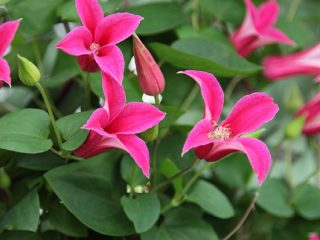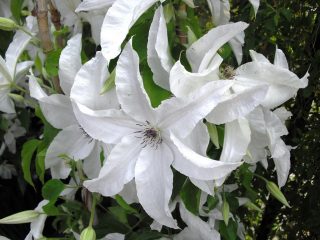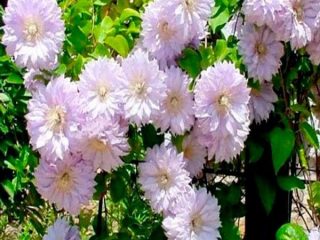Content
Peonies are one of the most popular and beautiful flowers that perfectly decorate gardens and bouquets. Among the many varieties, a special place is occupied by late varieties of peonies, which have a delicate and luxurious beauty; their inflorescences amaze with bright colors and unique shapes. This article discusses the flowering time of late varieties of peonies, their advantages and disadvantages, and also presents a list of the most interesting varieties for the Moscow region.
Flowering dates for late varieties of peonies
Late varieties of peonies differ from early and middle representatives in their late flowering periods. Most often, they begin to delight the eye with flowers in July and continue to delight the eye until the end of August or even the beginning of September.
Advantages and disadvantages
Late-flowering varieties of peonies have a sufficient number of advantages compared to other varieties. If you plant plants with different flowering periods correctly, the flowerbed will not be empty throughout the warm season.

Late-blooming peonies can be an alternative replacement for roses
Pros:
- look elegant and elegant;
- do not suffer from recurring spring frosts;
- bloom for a long period of time;
- resistant to adverse weather conditions;
- Perfectly camouflage flower beds with early flowering bulbous crops, which by that time are entering the dormant stage.
Minuses:
- due to the autumn flowering period, very late varieties of peonies may not have time to fully open if early autumn or cool weather arrives;
- limited color palette, including mainly only light and pink shades of colors.
Varieties of peonies with late flowering
If you want to plant flowers with late flowering periods, you need to pay attention to peonies. They will perfectly decorate the garden and will also delight you with cut flowers. Below are the most popular varieties.
Chiffon Parfait
Chiffon Parfait was developed in the United States in 1981 by a breeder named Roy Klem.
The buds are lush, terry texture, pistils and stamens are absent. The palette of inflorescences is pastel pink, with a light salmon tint. The shape of the inflorescences is spherical, pink in the center. The flowers have a light and pleasant aroma. The buds reach 19 cm in diameter.
The tall, erect stems of the late variety can easily withstand a large number of large flowers and do not require support. The peony bush has a spreading appearance, covers an area of up to 1 m. Its flowering begins in early July and lasts approximately 20-25 days.

After the inflorescence is fully opened, a silvery border is visible on the corrugated petals of the Chiffon Parfait peony
Elsa Sass
Breeder Hans Peter Sass developed the late peony variety Elsa Sass in the USA in 1930.
The buds of the plant reach a diameter of 18 cm. The shape of the flowers is double pink. Velveteen petals are creamy white with a slight pinkish or yellowish tint.
The flowering bush reaches a height of 80 to 90 cm. Its erect stems are usually strong and thick, and the leaves are colored a rich green. Peony Elsa Sass blooms in the last days of June or at the very beginning of July. Flowering lasts on average up to 4-5 weeks.
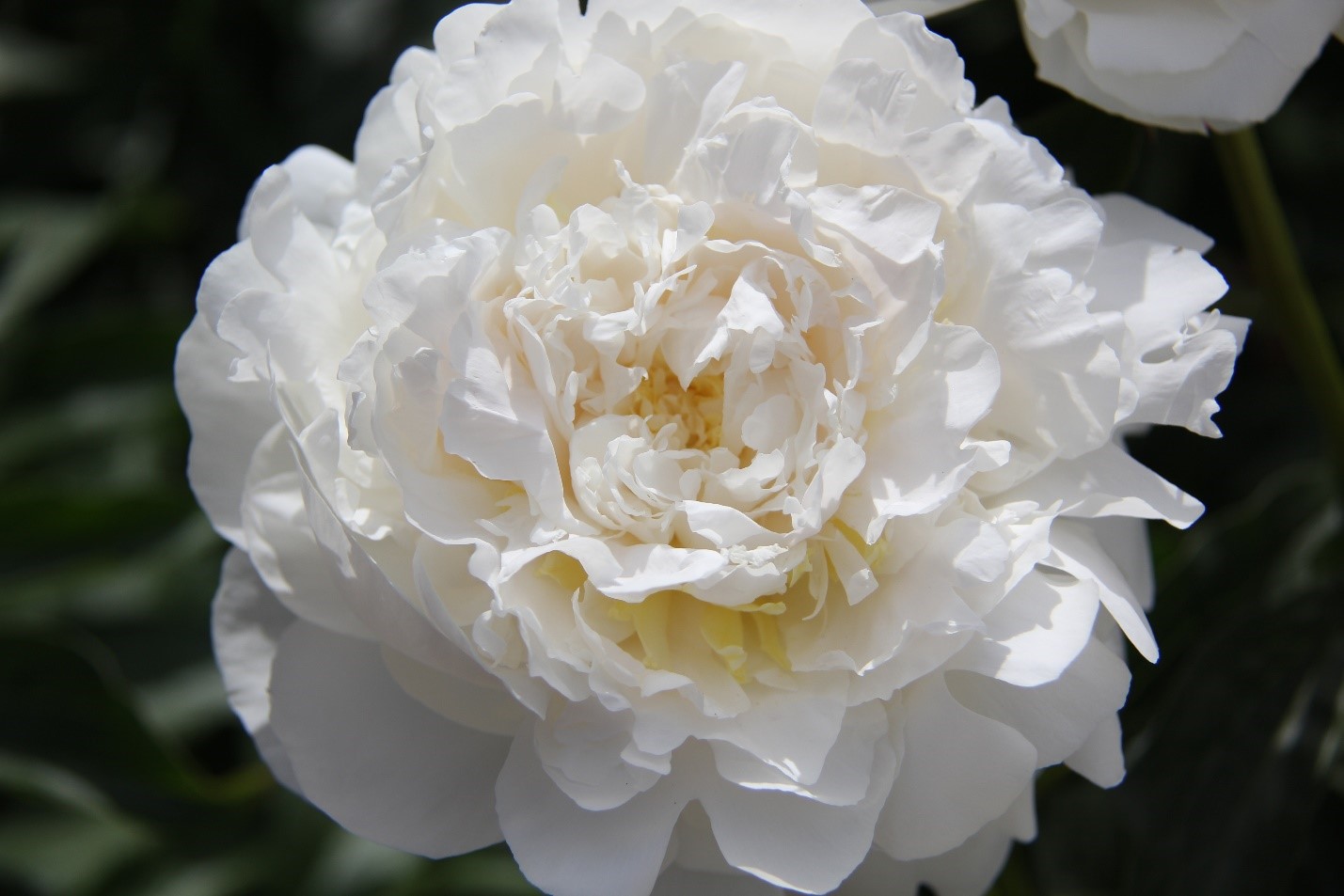
In the center of the Elsa Sass flower there are bright yellow stamens
Emma Klehm
The variety Emma Klem was named by originator Carl J. Klem in honor of his grandmother. Launched in 1951 in the USA.
This is a classic double representative on a strong bush 60-70 cm high. The petals of the flower are collected in bright pink balls with a lilac tint, which stand out effectively against the background of dark green foliage. The buds have a pleasant aroma.
Peony blooms very late, one of the last - after July 1st.

The abundance of numerous rows of large petals gives the Emma Clem flower the shape of a lush hemisphere
Fairy Dream
Fairy Dream is a late hybrid peony with a unique combination of colors and flower shape. Its large, double, pink-shaped inflorescences have a rich creamy pink hue that gradually turns white from the center to the edges of the flower. Fairy Dream buds reach a diameter of 15-18 cm and surprise with their harmony of color transitions. The large, slightly outward-curved petals have jagged edges. Their aroma is moderately sweet.
The variety was developed in the United States of America in 1959. Breeder: Nicholls-Wild & Son.Blooms at the end of June.
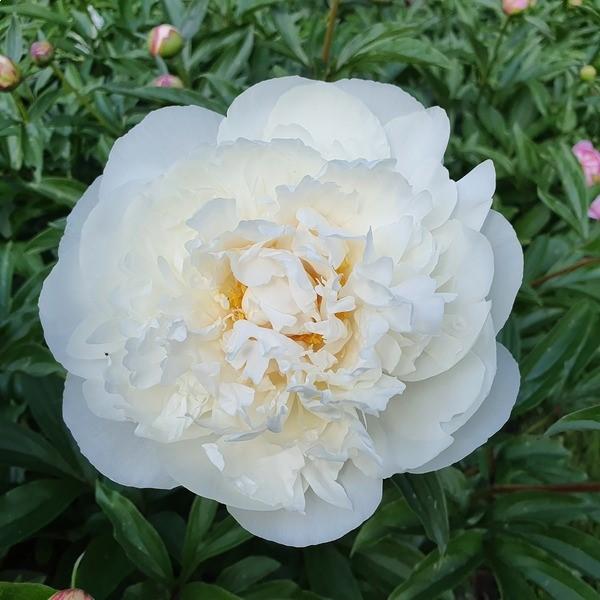
The bush with green leaves and strong stems grows quite tall - about 90 cm
Jacorma
Horticulturist De Time produced the late variety Jacorma in the Netherlands in 1969. The name Jacorma comes from three Dutch names Ja(n), Cor and Ma(rie).
Characterized by compact bushes with upright growing shoots. The stems are well leafy and form a lush crown. The leaf blades are dark green in color, medium in size, dissected. With the arrival of autumn they turn purple.
When the flowers open, they become a rich pink color, but gradually under the influence of the sun they noticeably lighten. When opening, the buds emit a pleasant aroma. They bloom after July 1st.

Round large petals form a large terry bud
James Pillow
The variety of the same name was bred by James Pillow in 1936 in the USA.
This late peony is distinguished by its shape and seasonally changing color. The flowers are pale pink, with a yellow sheen from the base of the petals, creating a warm inner glow effect. They are terry and pink, with a pleasant sweet aroma.
The height of the flowering bush is 90-100 cm. The stems are straight and strong. The buds of the variety bloom in the fourth week of June.

Peony James Pillow has the effect of solar illumination from the inside
Joseph Christie
Breeder Rosefield developed the variety Joseph Christie in the USA in 1939.
The exquisite inflorescence has a pink, terry shape. The color is white, with a delicate greenish-cream tint on the inside. Emits a soft pleasant aroma.
Green foliage is well distributed on strong stems. Bush 70 cm high. The variety is very late, blooms after July 1.

Joseph Christie of perfect pink form with a bud in the center
Marie Lemoine
Marie Lemoine was selected in France in 1869. The originator is Auguste Calot.
The diameter of the inflorescences reaches no more than 20 cm. The color of the petals is white with a slight lemon tint. Some flowers have petals with a crimson border. Their shape is terry, crown and rose-shaped. They emit a pleasant but subtle aroma.
The powerful bush reaches a height of 70 cm. Its trifoliate, pointed leaf plates have a rich emerald color. Pleases with its flowering at the end of June. It lasts about four weeks.

The variety lacks stamens and pistil
Mother's Choice
Mathers Choice first appeared in the United States in 1950. Selection by Lyman D. Glasscock.
The buds of the late plant are double, pink-shaped, medium-sized, up to 16 cm in diameter. The petals are located very tightly to each other. They are white on the outside and become more creamy towards the middle. This variety has a strong sweet aroma.
Peony leaves are small, carved with thin lobes, dark green. The stems are strong and do not require support. The height of Mathers Choice is not very large - the plant reaches 80 cm above the ground. The buds bloom around June 24-27. Maximum flowering time is three weeks.

The shape of Mathers' Choice flowers resembles roses
Lalebay (Lullaby)
Lalebai is a very late variety with white double pink flowers. When it blooms, it has a light blush color and gradually fades to white. The diameter of the fragrant flower is 18 cm. It has neither stamens nor stalks.
The bush of this interspecific hybrid grows up to 1.2 m. The dark green foliage is glossy and very dense.
It first bloomed in the USA in 1967.

Gradually, the color of Lalebai’s petals changes - it brightens and the color in bloom becomes flesh-pink, disappearing to white
Junior Miss
The creator of the Junior Miss variety is Person-Seidl. It was released in the United States in 1989.
The flowers grow large and very dense, reaching 18-20 cm in diameter. The texture of the inflorescences is terry, the shape is pink. Their color is pink, but over time the middle becomes lighter and a creamy frill may appear. A dense bud opens slowly, not always completely. The aroma is quite rich.
Strong stems hold their shape well even in rain. The large leaves have a dark green color and beautiful carved edges. The height of the bush is 1 m. Buds begin to appear only in July and can remain on the bushes until August. Flowering lasts about a month.

Junior Miss buds consist of many petals, no stamens and no seeds
Conclusion
Late varieties of peonies are a real decoration of gardens and plots in the Moscow region. Beautiful flowering and unique aroma make them very popular among gardeners and flower lovers. However, when choosing late varieties for the garden, you should take into account the climate and care, which may require some effort. Taking into account the flowering time and characteristics of each variety, you can create a unique garden that will delight you with its beauty and aroma.

